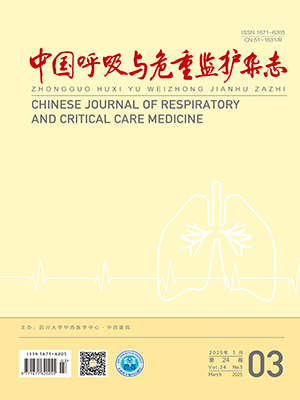Objective To investigate the viral etiology of acute lower respiratory tract infection in adult inpatients. Methods 192 adult inpatients suffering from community-acquired pneumonia, acute bronchitis, or acute exacerbation of chronic obstructive pulmonary disease, admitted from October 2007 to October 2008, were enrolled in the study. Swabs from the nasopharynxes were collected. Multiple polymerase chain reaction was employed to identify the 7 common species of respiratory virus ( including 11
subspecies) . Serumspecific IgM against several viruses were detected by indirect immunofluorescence. 106 healthy volunteers were enrolled as control. Results Only 4 cases were found to be infected with virus in 106 healthy volunteers. Viruses were identified in 80 ( 41. 6% ) cases of 192 inpatients and 99 ( 51. 5% )viral strains were detected. The most common viruses identified in the inpatients were influenza virus A ( FluA) , rhinovirus ( RhV) , and parainfluenza virus 1 ( PIV1) . The ratio of the 3 virus strains to the all strains identified was 81. 8% ( 81/99) . Serumspecific IgM was positive in 61 ( 31. 7% ) inpatients and 73 ( 38. 0% ) viral strains were detected. The most common viruses identified in the inpatients were FluA, PIV1,and respiratory syncytial virus ( RSV) . When summing up the data from the swabs and serum, 91 ( 47. 3% )
cases had viral infection in 192 inpatients and 110 ( 57. 2% ) viral strains were detected. Conclusion The rate of viral infection is relatively high in the adult inpatients with acute lower respiratory tract infection, and the most common species are FluA, RhV, and PIV1.
Citation: ZHOU Yiping,LU Xuedong,CHEN Xiaoke,YANG Laizhi,LIU Hui,YU Haiqiong.. Viral Etiology of Acute Lower Respiratory Infection in Adult Inpatients. Chinese Journal of Respiratory and Critical Care Medicine, 2010, 9(4): 378-382. doi: Copy
Copyright © the editorial department of Chinese Journal of Respiratory and Critical Care Medicine of West China Medical Publisher. All rights reserved




